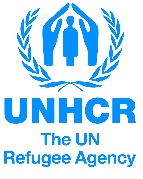Diffa, Niger: An ‘unexpectedly’, diverse communications eco-system

“Never assume you know the communications eco-system – never think you know how people share information and which sources they trust better than community members themselves”.
These were the words I found myself repeating in South Sudan, whilst supporting the recent CDAC Network Communicating with Communities (CwC) training. The importance of understanding the communications and media ‘landscape’ of a context or country has been well established by the #commisaid community. It is a key activity in terms of practicing what we preach – namely: listening. As it is such an essential process, a significant amount of time is often dedicated to Information and Communications needs assessments during CwC trainings
From UNHCR Innovation’s perspective, learning directly from the people we’re innovating with and for is critical. Therefore, the Emergency Lab’s first missions to an operation include an initial scoping – a rapid communications assessment – to help us develop a better contextual understanding. In late July I travelled to Diffa, in Niger, to support the UNHCR operation and partners to strengthen their communication with communities – starting with a scoping. There, I discovered an unexpectedly diverse communications eco-system.
Unexpected? In Niger, I recognised that I only partly practice what I ‘teach’.
The ongoing repeated violent attacks by Boko Haram, that started in Nigeria and have spread across the Lake Chad basin, have caused multiple population displacements. As of 30th July, there were over 187,000 Nigerian refugees displaced to countries in the Lake Chad Basin region, with many hundreds of thousands internally displaced by fighting – including within the Diffa region, where the displaced population is estimated at over 240,000, including refugees, returnees and IDPs.
As the UNHAS flight flew from Niamey to Diffa – over several hours of flat semi-deserted Sahel – I was already pre-empting solutions for the team. What was going to be feasible in this low-infrastructure, low-tech context with limited communication channels? I was already assuming I knew the communications landscape – and at 7,000 metres I definitely wasn’t designing with refugees.
During my mission in Niger these assumptions were certainly challenged. Here are a couple of examples why:
For more information go to http://innovation.unhcr.org/diffa-niger-unexpectedly-diverse-communications-eco-system/
4 Notes
 howaid reblogged this from unhcrniger
howaid reblogged this from unhcrniger  howaid liked this
howaid liked this  qdesk reblogged this from unhcrniger
qdesk reblogged this from unhcrniger  qdesk liked this
qdesk liked this  unhcrniger posted this
unhcrniger posted this

